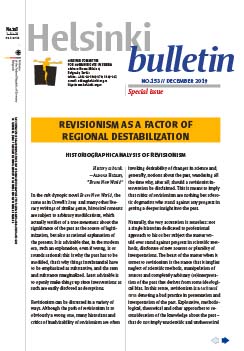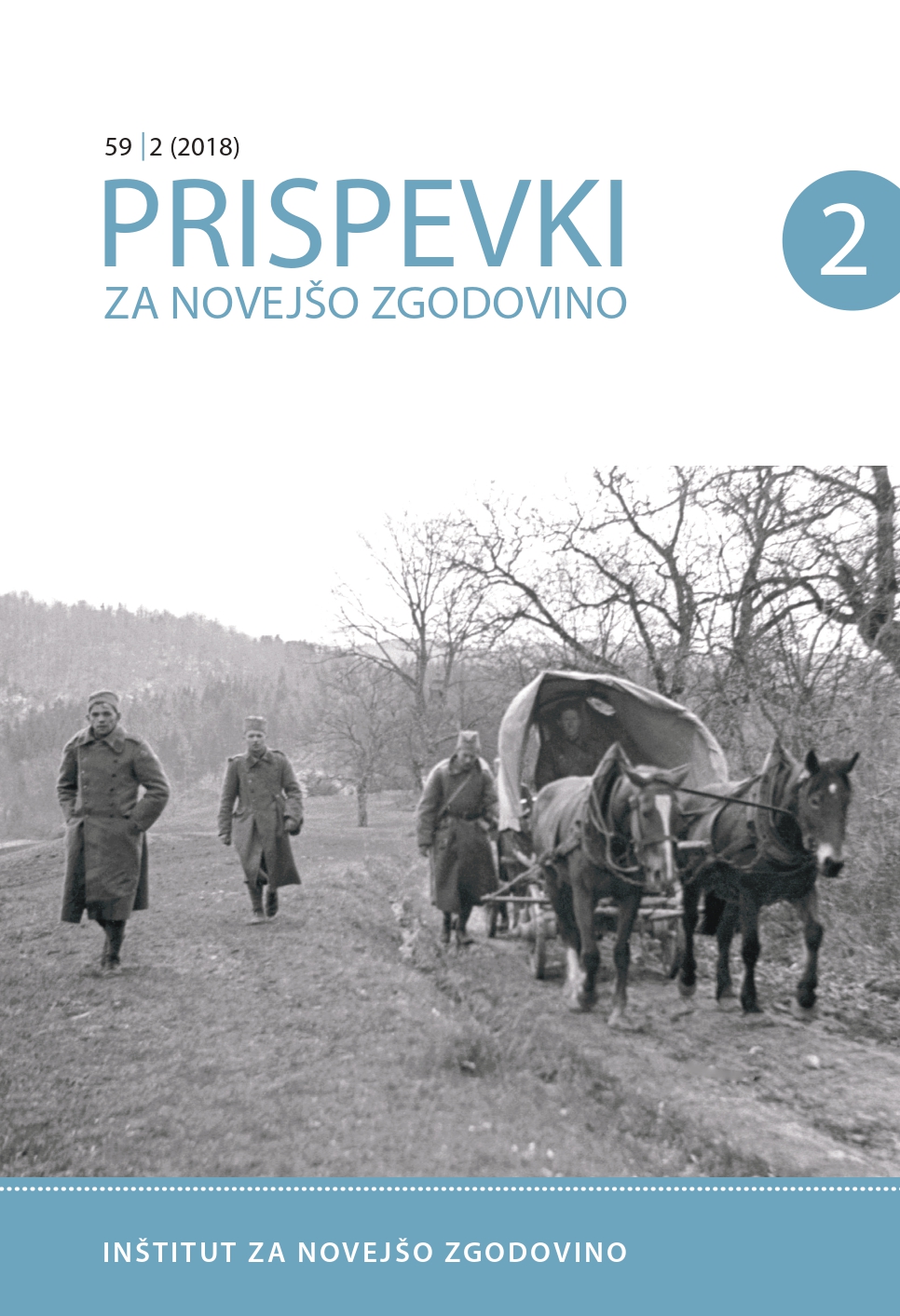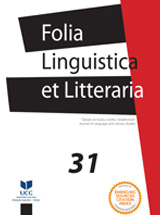
We kindly inform you that, as long as the subject affiliation of our 300.000+ articles is in progress, you might get unsufficient or no results on your third level or second level search. In this case, please broaden your search criteria.


In 2014, the Polish studio 11 Bits Studio produced the computer game entitled This War of Mine. The concept of this game was based on the course of the siege of Sarajevo. This production has changed the way of representation of war in video games. The main characters are not soldiers, but civilians, whose main aim is: to simply survive the war. Starvation, cold, lack of sleep and psychosomatic problems turn out to be more dangerous than the enemy’s army. Survival is possible, but forces the player to make ethically ambiguous decisions. The aim of the paper is to determine how the creators of the game presented the perspective of the civilians. This analysis will be based on the plot and mechanics of This War of Mine, on the historical context (war in the Balkans: the siege of Sarajevo) and with regard to virtual war schemes (topic of war in video games). The paper will also propose a concept of the game about war as an agon: the territory of not only a conflict, but also competition and a war spectacle.
More...
The Croatian War of Independence is of exceptional importance to Croatian society, but is often the subject of controversial interpretations. Most controversies have been resolved via scientific and professional papers published in Croatian academic journals. Therefore, this work presents a selective overview of the most significant scientific and professional papers on the Croatian War of Independence published in the leading social sciences and humanities journals in Croatia. In addition to the most important historiographical works on the Croatian War of Independence, the authors have analysed works from the fields of political science, sociology, law, and demographics that partially address the War. They have divided this paper into two chronological periods, in which they have analysed the changing of research interests and approaches to the topic of the war in Croatia. During the 1990s, the greatest part of the works on the Croatian War of Independence were published in the journals Politička misao, Društvena istraživanja, and Polemos. Despite objective difficulties, such as the inaccessibility of archival material, the mentioned journals contain quality works that have contributed towards a better understanding of the historical context of the Croatian War of Independence. The 2000s were marked by the process of de-Tuđmanisation, whose main characteristic was the denial of facts regarding the Croatian War of Independence. Although it negatively affected the social and political conditions in Croatia, de-Tuđmanisation resulted in numerous quality works covering the Croatian War of Independence, published in academic journals such as the Journal of Contemporary History, National Security and the Future, and Scrinia Slavonica. In contrast to public media and politics, the authors of these works approached the context of the Croatian War of Independence from outside the frame of daily politics. After the collapse of de-Tuđmanisation, researchers’ access to a significant part of archival material of Croatian provenance has become more difficult, prompting them to turn to archival material created by the activities of the Yugoslav People’s Army and rebel Serb civilian and military institutions, kept at the Croatian Memorial-Documentation Centre for the Homeland War. Despite all difficulties, the Croatian War of Independence is a promising period for academic research, as is attested to by the exceptional interest shown by researchers.
More...
Classical armed aggression on the internationally recognized, independent and sovereign Republic of Bosnia and Herzegovina was carried out by Serbia and Montenegro (the Federal Republic of Yugoslavia), or by the direct participation of their armed and military forces. The main organizers were Serbia and Montenegro (the Federal Republic of Yugoslavia), “Serb Republic of Bosnia and Herzegovina“/“Republic of Srpska“, JNA/VJ and other Serbian armed forces. Aggression is persuasive by the commission of numerous mass and individual forms of crimes against humanity and international law, including the crime of genocide against Bosniaks. This can especially be identified and investigated on the example of the Višegrad municipality. The extent and scope of crimes committed in the territory of the municipality of Višegrad, in the period of 1992-1995, that the active Serbia and Montenegro (Federal Republic of Yugoslavia) also had active participation in. The general hypothesis is that in Višegrad between the years of 1992-1995. crimes committed in agrression and genocide, armed and military formations of Serbia and Montenegro (the Federal Republic of Yugoslavia) were also involved, and that the crimes committed were characterized by their planning and preparation, organized conduct and systemacitity, thus proving both elements of the genocide: intent (mens rea) and act of genocide (actus reus). Through the scientific methodological allegiance, the relevant documents were drawn up, conclusions were drawn up of the participation of Serbia and Montenegro (the Federal republic of Yugoslavia) in the aggression against the Republic of Bosnia and Herzegovina and the genocide against Bosniaks in Višegrad in the period of 1992-1995.
More...
Children who will come after us must know about the heroes of Bosnia, must know for their victorious works in order to remember victims and genocide, while identifying with those who gave their lives. Everything what happened in Srebrenica, Tomašica, Kozarac, Sana Valley and elsewhere should not repeat anywhere on a much larger scale. One of these great Bosnian heroes was General Izet Nanić, the war commander of the 505. the Knights' Brigade from Bužim.
More...
Turkey's involvement in the bombing of Yugoslavia in 1999 was caused by the need to reinforce Turkey's influence in the Western community, safeguard its regional interests, and support the election campaign. Turkey tried to correlate its policy with that of the West. However, the fundamental interests of Turkey and the West did not coincide. This was “Turkey’s Balkan Dilemma”.
More...
The number of Serbs who were murdered by the Croatian Ustaša regime is still contentious, even though there is broad agreement on the figures among expert historians. The issue is blurred by authors who ignore the canon of scientific discovery. Ustaša terror was awful enough, the author argues. Distorted numbers trivialize debate and degrade the victims.
More...
The aggression against the Republic of Bosnia and Herzegovina and occupation of its large part from 1992 to 1995, is the part of the Great Serbian project that is a continuation of conquering-expansionist and genocidal policy towards Bosnia and especially against Bosniaks. In order to achieve the traced plans, the most massive and the most heinous crimes were committed. This was a try, not only physical destruction, but the collapse of the identity of a nation. In this criminal feast more than 100,000 people were killed, mostly civilians; about 30,000 women, girls, boys and men were raped and sexually abused; about 650 concentration camps and other detention facilities were formed through which passed about 200,000 inmates, including women, children and elderly people - about 30,000 people in them were killed; there were more than 700 mass graves. Around 2.2 million people were expelled from their homes that are for more than half of the total population. More than 30,000 people were forcibly disappeared. All forms and proportions of the crimes are denied and negated. Negationism as the final phase of the genocidal process "makes to the witness what the criminal did to the victim."
More...
The paper seeks to show what sort of memory of the concentration camp Jasenovac was cultivated in the SFR Yugoslavia, by reviewing the work and memorial practices applied in the Jasenovac Memorial site. The focus is on the eighties of the twentieth century, when the Yugoslav narrative was tempted. It is shown how the gradual break up of such a narrative reflected on the memory of the concentration camp Jasenovac. The paper seeks to point out on the very close links between the Jasenovac themes and the central state narratives.
More...
The International Criminal Tribunal for the former Yugoslavia (ICTY) was established to determine the responsibility of individuals for committing crimes. In their practice, various court panels of this tribunal met with issues inherent in mass crimes, such as crimes against humanity and the crime of genocide - the participation of several persons in the planned and jointly conceived collective criminality, in a large number of cases without explicit norms in its Statute, which would adequately respond to the determination of liability. In the field of determining individual responsibility, the ICTY significantly developed its jurisprudence, which is the subject of this paper.
More...
Stojan Cerović, late journalist for the Vreme weekly, wrote, long ago, that our past was more uncertain than our future. And he was as right as one could be. Over 30 years only, since the fall of the Berlin Wall till the beginning of Yugoslavia’s disintegration, our past has been “changed” several times. In other words, dramatic political developments we have gone through influenced changes in values, paradigms, historical role models, heroes to glorify or anti-heroes to despise.
More...
The culture of remembrance that dominates national communities and states that emerged after the civil war and disintegration of the former Yugoslavia is an area of daily conflict, and different and mutually exclusive interpretations of events from the past testify that Serbs, Croats, Bosniaks and other ethnic groups that share a common history remember and interpret it in completely different ways. Selective recollection, relativisation and fabrication of the past, reversal and forgetting, and falsification of facts about individual and group roles in contemporary history result in political conflicts in the present and could potentially lead to future misunderstandings and conflicts, making the Balkans even more unstable and without any perspective
More...
The issue of the military order is a very complex one. When giving or executing an order, one should always take into account the necessity to make choices. The decisions taken may in the future imply criminal liability as a consequence of the order that is contrary to legal norms, or executing it. The purpose of the article is to present the problem of giving an order from the perspective of the crimes committed in the former Yugoslavia, with a detailed account of the R. Krstic’s case. The author tried to answer the questions: What is the scope of the commander's liability? Is he liable only for the orders he has given? Does this liability extend to the behavior of his subordinates as well? In the presented article an analysis of selected court cases important from the point of view of the problem of giving an order was carried out. For this purpose, the regulations of International Military Tribunal at Nuremberg were analyzed. Subsequently, an analysis of selected court cases being investigated under the jurisdiction of the International Criminal Tribunal for the Former Yugoslavia. In conclusion are indicated the regulations of International Criminal Tribunal for Rwanda and the regulations of the Rome Statute of the International Criminal Court.
More...
Чланак представља анализу дешавања у вези са бомбардовањем кинеске амбасаде у Београду 1999. године. Аутор указује на хронологију дешавања и анализира политичке потезе заинтересованих страна. Посебну пажњу аутор је посветио политичким односима Народне Републике Кине и Сједињених Америчких Државе у периоду од маја до децембра 1999. године. Рад је писан на основу литературе, објављених докумената и извештаја релевантних институција и владиних агенција, као и извештаја новинских агенција.
More...
Among the numerous open questions of contemporary historiography regarding the breakdown of Yugoslavia and its consequences, the issues connected to the post-Yugoslav wars still cause the most disputes. Even in the case of the war in Bosnia and Herzegovina, waged from 1992 to 1995, all of the important questions concerning its causes, character and consequences, are still considered open, whereby the dubious interpretative discourses are often constructed on the basis of an approach which is founded on the narrowing of the jointly observed historical phenomena. The attempts to construct and legitimize the corresponding particular interpretations of the character of the war in Bosnia and Herzegovina through a narrow and selective approach applied in the identifications of the warring sides and their mutual relations are not rare. In such situations the most reliable methodological approach in the framework of historical science is to return the focus from the level of interpretation to the historical sources, their analysis, determining the authenticity and relevance for the collection of issues in question. In this work we will dedicate our attention to the directives of the Main Headquarters and the High Command of the Army of Republic of Srpska issued during 1992-1995 in those parts in which these documents perform the identification and determination of the enemy.
More...
Review of the book "Framing the Nation and Collective Identities: Political Rituals and Cultural Memory of the Twentieth-Century Traumas in Croatia" by Vjeran Pavlaković and Davor Pauković
More...
The area of Drava Banovina in the April War wasn’t the subject of special research so far. Therefore, we tried to give an answer a number of questions based on unpublished sources which are keeping in the Military Archive of the Ministry of Defense of the Republic of Serbia, published sources, relevant memoir and historiographical literature: What was strategic position of the Drava Banovina, what kind of war preparations were made in that area, how the war operations were going and what was the function of the civil authorities during the war?
More...
In the XX century, especially after WWII, a great number of ethnic Macedonians have migrated to Australia and the US, while recently, after the 1991 dissolution of Yugoslavia, the direction of the migration influx has changed its course mainly towards Europe. While the first diaspora community was motivated by economic reasons drawing rural and urban citizens alike in pursuit of better life, the second wave of migration was led by political circumstances pushing mostly young educated people who failed to envisage decent life in the homeland. Hence there is a reason to believe that the two communities have different views and feelings of their homeland that underpin their construction of it. To identify the types of ‘Macedonia’ constructed by these two communities of migrants, and trace similarities and differences, this study will analyze on-line discourses on Macedonia produced by the members of the two diasporas. In so doing, we will be particularly interested in the meanings, attitudes, feelings and images the two communities ascribe to the homeland through the on-line interaction on their FB pages.
More...
Prikaz knjige: Salih Fočo, Rasturena država, Filozofski fakultet Univerziteta u Sarajevu, Sarajevo, 2019. str. 122.
More...
Prikaz knjige "Kosovo na kraju istorije. Sažeta analiza privida" od Aleksandra Petrovića i Danka Kamčevskog
More...